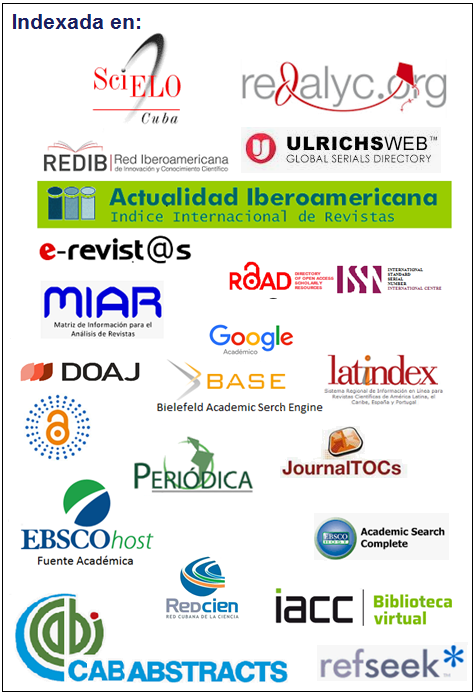Microstructure behavior in GMAW 2205 duplex steels welding for offshore applications
Keywords:
duplex stainless steels, GMAW, ZAC, microstructure.Abstract
This work evaluates the behavior of microstructure in the GMAW of 2205 duplex steels welding for offshore applications. Welding is performed with two input energy levels, 1.5 kJ/mm and 2.5 kJ/mm. Samples from welds for the metallographic analysis by Optical Microscopy of Heat Affected Zone are extracted. The ferrite fraction and austenite in the microstructure is quantified from image processing. It is concluded that the relationship of austenite/ferrite phases in the ZAC was altered, regarding the base metal, without showing significant differences depending on the input energy of the process and ZAC microstructure is constituted by a ferritic matrix with grain boundary austenite (GBA), with Witmastatten austenite (WA) and intragranular austenite (IGA). For offshore applications, it is recommended to use the input energy of 1.5 kJ/mm.Downloads
References
ASTM E3. 2011: Standard Guide for Preparation of Metallographic Specimens. American Society for Testing and Materials, West Conshohocken, 12 p.
ASTM E407. 1999: Standard Practice for Microetching Metals and Alloys. American Society for Testing and Materials, West Conshohocken, 21 p.
Graziano, U.; Firrao, D. and Taveri, G. 2015: Caracterization of welded joints (MIG and SAW) on LDX 2101 Dúplex SS. Procedia Engeneering, 109: 484-491.
Morales, E. V.; Betancourta, G.; Olaya, L. and Bott, L. 2022: Some Insight on the Heat-affected Zone Strengthening Mechanisms in Duplex Stainless Steels. Materials Research, 25: 1-11.
Morales, E. V.; Pozo, J. A.; Olaya, L.; Kassab, E.; Ponciano, J. A. C.; Ghavami, K. and Bott, I. S. 2019: Remarks on the evolution and performance of the different austenite morphologies at the simulated HAZs of a 2205 duplex stainless steel. J Mater. Res Technol., 8(5): 3936–3949.
Nowacki, J. and Łukojć, A. 2005: Structure and properties of the heat-affected zone of duplex steels welded joints. Journal of Materials Processing Technology, 164–165: 1074–1081.
Paulraj, P. and Garg, R. 2015: Effect of intermetallic phases on corrosion behavior and mechanical properties of duplex stainless steel and super-duplex stainless steel. Adv. Sci. Technol. Res. J., 27(9): 87–105.
Scotti, A. and Ponomarev, V. 2008: Soldagem MIG/MAG: Melhor entendimento, melhor desempenho. Artliber, Säo Paolo, 284 p.
Sieurin, H. and Sandström, R. 2006: Austenite reformation in the heat-affected zone of duplex stainless steel 2205. Materials Science and Engineering, A 418: 250–256.
Souza Da Silva, D.; De Queiroz, A. V.; Xavier, C. R.; Marcelo, C. J.; De Castro, J. A. and Mendes De Oliveira, E. 2016: Modelo duplo-elipsoide acoplado a volumes finitos para simular a soldagem GMAW do aço inoxidável duplex SAF 2205. Tecnol. Metal. Mater. Miner., 13(2): 148-156.
Touileb, K.; Hedhibi, A. C.; Djoudjou, R.; Ouis, A.; Bensalama, A.; Ibrahim, A.; Abdo, H. S.; Ahmed, M. M. Z. 2022: Mechanical, microstructure, and corrosion characterization of dissimilar austenitic 316L and duplex 2205 stainless-steel ATIG welded joints. Materials, 15(2470): 1-21.
Xavier, C. R.; Guimarães, H. and De Castro, J. A. 2015: An Experimental and Numerical Approach for the Welding Effects on the Duplex Stainless Steel Microstructure. Materials Research, 18(3): 489-502.
Yang, Y.; Yan, B.; Li, J. and Wang, J. 2011: The effect of large heat input on the microstructure and corrosion behavior of simulated heat affected zone in 2205 duplex stainless steel. Corrosion Science, 53: 3756–3763.
Published
How to Cite
Issue
Section
- Authors retain copyright and guaranteeing the right magazine to be the first publication of the work as licensed under a Creative Commons Attribution-NonCommercial that allows others to share the work with an acknowledgment of the work's authorship and initial publication in this journal.
- Authors may establish separate supplemental agreements for the exclusive distribution version of the work published in the journal (eg, place it in an institutional repository or publish it in a book), with an acknowledgment of its initial publication in this journal.
- Authors are allowed and recommended to disseminate their work through the Internet (e.g., in institutional telematic archives or on their websites) before and during the submission process, which can produce interesting exchanges and increase citations of the published work. (See The effect of open access)



